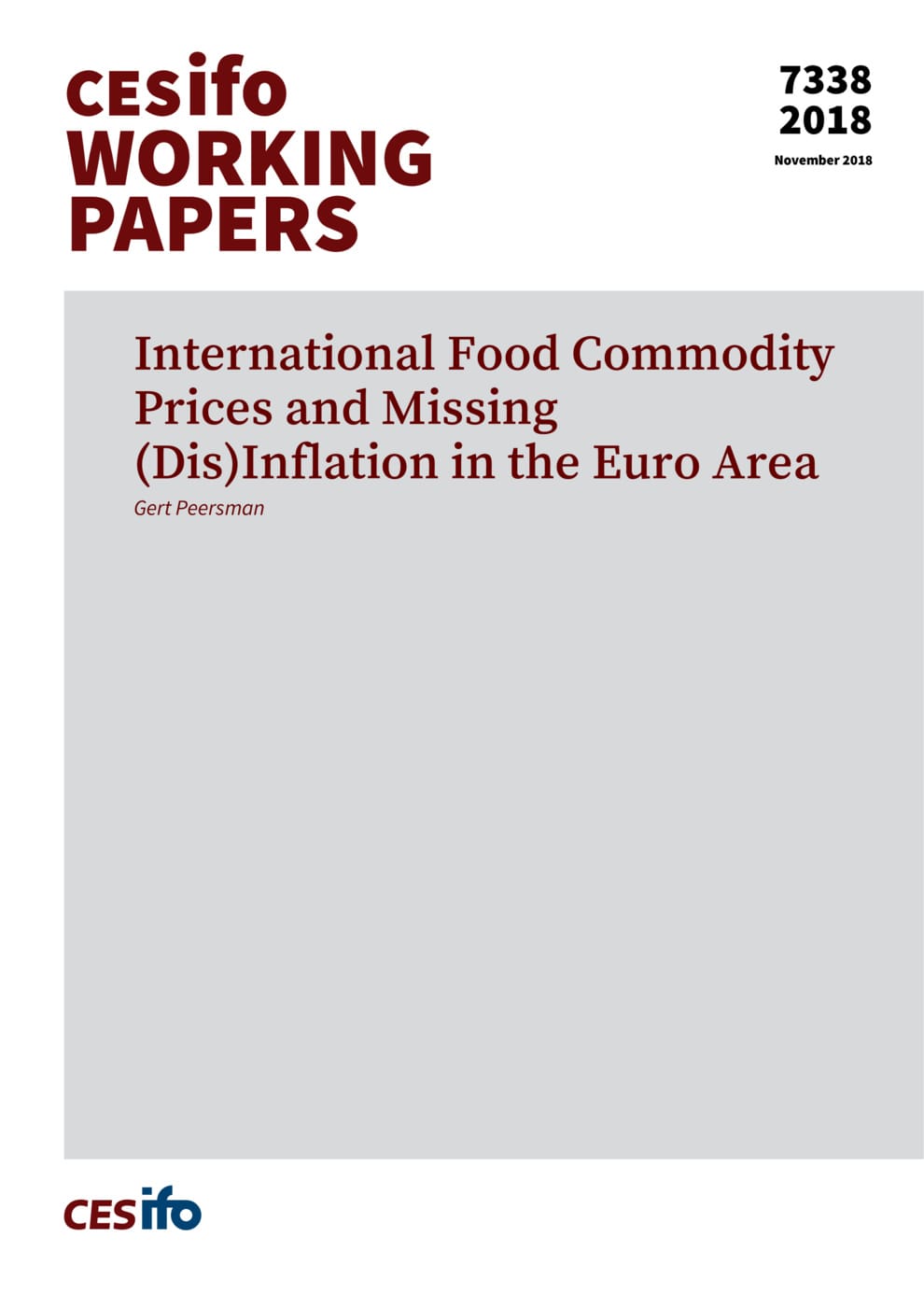International Food Commodity Prices and Missing (Dis)Inflation in the Euro Area
CESifo, Munich, 2018
CESifo Working Paper No. 7338

This paper examines the causal effects of shifts in international food commodity prices on euro area inflation dynamics using a structural VAR model that is identified with an external instrument (i.e. a series of global harvest shocks). The results reveal that exogenous food commodity price shocks have a strong impact on consumer prices, explaining on average 25%- 30% of inflation volatility. In addition, large autonomous swings in international food prices contributed significantly to the twin puzzle of missing disinflation and missing inflation in the era after the Great Recession. Specifically, without disruptions in global food markets, inflation in the euro area would have been 0.2%-0.8% lower in the period 2009-2012 and 0.5%-1.0% higher in 2014-2015. An analysis of the transmission mechanism shows that international food price shocks have an impact on food retail prices through the food production chain, but also trigger indirect effects via rising inflation expectations and a depreciation of the euro.
Monetary Policy and International Finance
Energy and Climate Economics